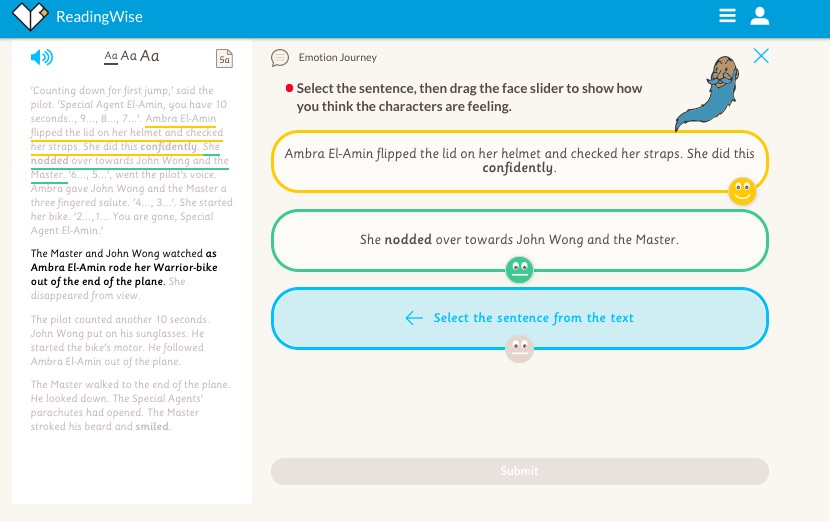
An important element of being able to explore the meaning of a text and reflect on what is happening is to take a closer look at the characters and their feelings. Certain strategies can help us develop a greater understanding of what we are reading, such as:
- putting ourselves in the shoes of a character and imagining how they might feel
- looking at our own experiences and using these to identify with a character
- being able to chart the development of a character over a period of time
What is Emotion Journey?
Emotion Journey is an activity which gives learners the chance to explore these strategies and try to get into the minds of characters. This can be easily demonstrated in the classroom. Select a piece of text featuring a character or characters displaying some kind of emotion. Then create a ‘character emotions register’, a five-point scale of emotion, on the whiteboard. For example draw a ‘sad face’ on the left and a ‘happy face’ on the right, with three more stages in between. As a group learners can decide how the character might be feeling and where you should put a mark on the board to express this, next to which ‘face’. This can lead to a discussion around the responses.
Emotion Journey in The Red Stone of Calcutta
Emotion Journey is the first mini-skill learners will complete when they get to the Summarise Mega-Skill. Here is how our online guide, a character called the Master, describes Emotion Journey:
“In Emotion Journey we review how some of the characters are feeling as they journey through the story, tracking their emotions. These sentences are special as they give us hints at how our characters are feeling. Think about how the character might be feeling. To recap and record that thought, move the slider to show how you would describe the character’s emotion at that very moment.”
To start this activity, a sentence from the text is highlighted, describing a character or the action they are taking. The learner reads the sentence, clicks on it to select it, and a face slider appears. The learner can take moment to have a think about how the character might be feeling right at this moment, and then move the face slider along to express this. They can move the slider from left to right to signify how strong they feel the emotion is, from ‘sad’ on the left to ‘happy’ on the right. There are four sentences in total to consider.

This mini-skill develops higher-order thinking skills such as being able to analyse and evaluate. Learners are encouraged to make emotional inferences and empathise with how the characters may be feeling. The discussion time with the supervisor is a great opportunity to discuss the evidence, both implicit and explicit, as to why a character might be feeling a certain way, and to explore this further as a group.
What do you think?
We'd love to hear your thoughts about Emotion Journey as a comprehension strategy, and ways that you've integrated this practice into your classroom. Have you seen anything special?
The ReadingWise Demo
Short, friendly and informative - you might like to arrange a demo with our team at a time to suit you.So far we've reached many thousands of learners and would love to explore working with you if it might help more children read.








